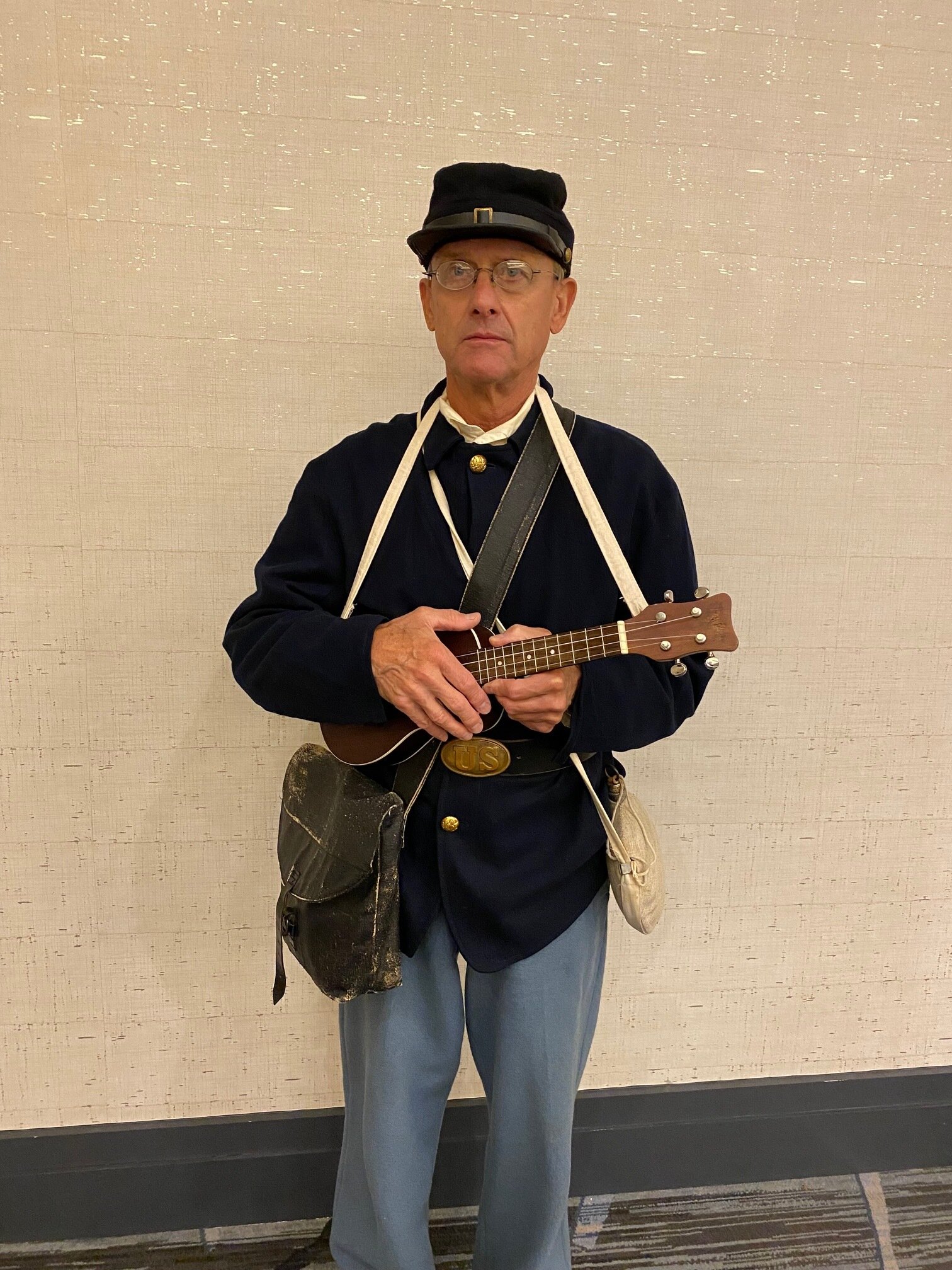October 5th was our second in-person meeting of this campaign year and it was great to see each other face-to-face. After a good meal and our book raffle, we were treated to a fascinating account of the surrenders which took place after Appomattox, but which never receive the media attention of the one between Lee and Grant.
Robert M. (Bert) Dunkerly spoke of the differences between the Appomattox event and those which followed. Grant had the army issue certificates of parole, which allowed Confederate soldiers to use Union transportation to surrender weapons and return home.
Of Lee’s much larger force, only 28,231 actually surrendered Many others escaped or left. over an mumber of days there were a series of surrender ceremonies, including the April 10 Calvary surrender; the April 11 artillery surrender, and the April 12 Infantry surrender..
Appomattox was the only one to have a ceremony, with Confederate soldiers passing through lines of Union troops.
In North Carolina, Johnston heard Lee’s surrender, and asked for terms. Initially generous terms were given, but rejected by the new DC government after Lincoln’s assassination. Even though ordered to resume fighting by Jefferson Davis, Johnston refused, and on April 26, Sherman and Johnston signed a new surrender agreement, similar to the one Grant and Lee’s Appomattox pact. This became the largest surrender of the war, involving 88,000 soldiers.
In Alabama, Richard Taylor, the son of President Zachary Taylor, petitioned for terms from Union Gen Canby and on May 4, surrendered almost 40,000 troops at the Magee house near the railroad.
Meanwhile in Mississippi, Buckner Smith and Canby concluded an agreement at the Charles hotel in New Orleans, and signed in Galveston harbor on June 2, involving 55,000 troops.
Further West in Indian Territory (now Oklahoma) another pact was entered into at Fort Townsend in June. Finally by end of June all Confederate troops had surrendered.
































































